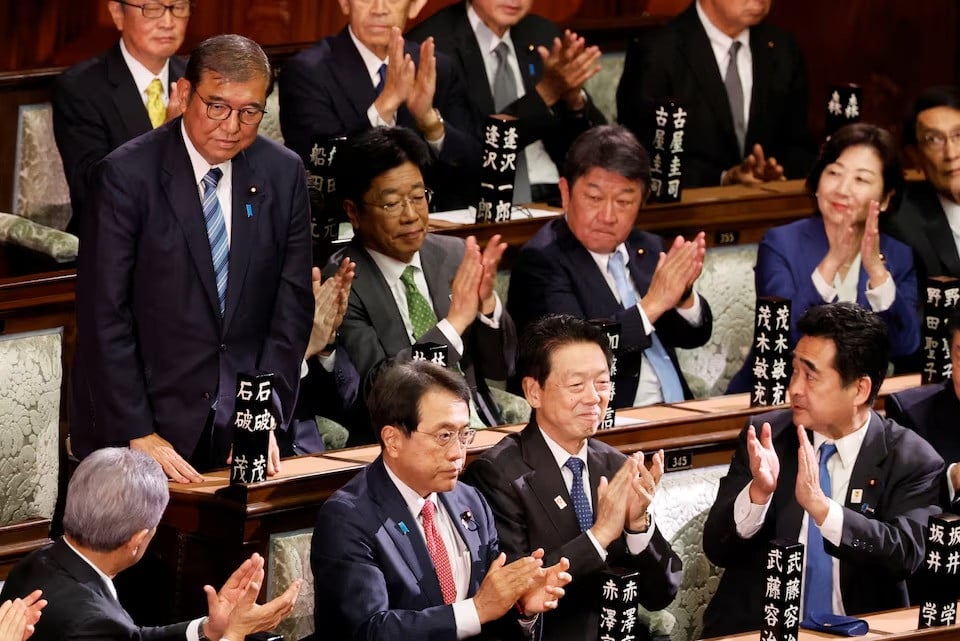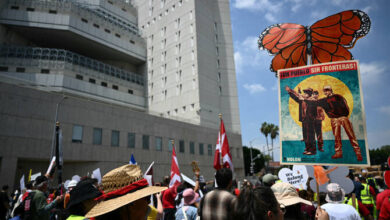Japanese lawmakers voted for Prime Minister Shigeru Ishiba to stay on as leader on Monday, after his scandal-tarnished coalition lost its parliamentary majority in a lower house election last month.
Ishiba, who called the snap poll after taking office on October 1, must now run a fragile minority government as protectionist Donald Trump returns to office in main ally the United States, tension rises with rivals China and North Korea, and domestic pressure mounts to rein in the cost of living.
His Liberal Democratic Party and coalition partner Komeito won the biggest bloc of seats in the election but lost the majority held since 2012, leaving him beholden to small opposition parties to pass his policy agenda.
“In light of the very challenging election, we must transform into a national party that serves the people, that empathizes with the peoples’ struggles, their misery, and their joy,” Ishiba said at a press conference after parliament voted to keep him in his job.
Underlining his party’s fragility, however, Monday’s vote, broadcast on television, went to a run-off for the first time in 30 years, with no candidate able to muster majority support in the first round.
Ishiba prevailed in that run-off, garnering 221 votes, well clear of the head of the main opposition Constitutional Democratic Party and ex-PM Yoshihiko Noda, but still short of a majority in the 465-seat lower house.
Japan will hold elections next year for the less powerful upper house, where the ruling coalition’s slim majority could also be at risk if Ishiba cannot revive public trust roiled by a scandal over unrecorded donations to lawmakers.
BUDGET CHALLENGE
His imminent challenge is compiling a supplementary budget for the fiscal year through March, under pressure from voters and opposition parties to raise spending on welfare and take steps to offset rising prices.
For approval he needs the backing of at least one opposition party, which is most likely to be the Democratic Party for the People (DPP) headed by Yuichiro Tamaki. He has held co-operation talks with Ishiba, but DPP lawmakers did not vote for Ishiba to stay on as prime minister.
Tamaki is also in a precarious position after admitting Monday to an extra-marital affair revealed in a tabloid magazine.
With his premiership confirmed, Ishiba appointed three new cabinet ministers, one each for transport, justice and agriculture, two of whom replace LDP lawmakers who lost their seats in the lower house election.
Ishiba now has to prepare for a slate of international engagements, including a summit of the Group of 20 big economies in Brazil on November 18 and 19.
He is also trying to arrange a stopover in the United States on the way to or from that gathering to meet Trump. The Japanese leader spoke to the president-elect for the first time on Thursday in a “friendly” five-minute conversation during which he congratulated him on his election victory.
Some Japanese officials nonetheless fear Trump might again hit Tokyo with protectionist trade measures and revive demands for it to pay more for the cost of stationing U.S. forces there.
These issues were largely smoothed over in Trump’s first term, from 2017 to 2021, by the close ties between the president and Japan’s then-premier, Shinzo Abe – a bond Ishiba seems keen to re-establish.
Trump “said many things on Ukraine, Gaza and alliances during the election, but it is difficult to predict what his policies will be until he assumes office,” Ishiba said. “Our focus will be on proposing solutions that mutually benefit both nations.”







